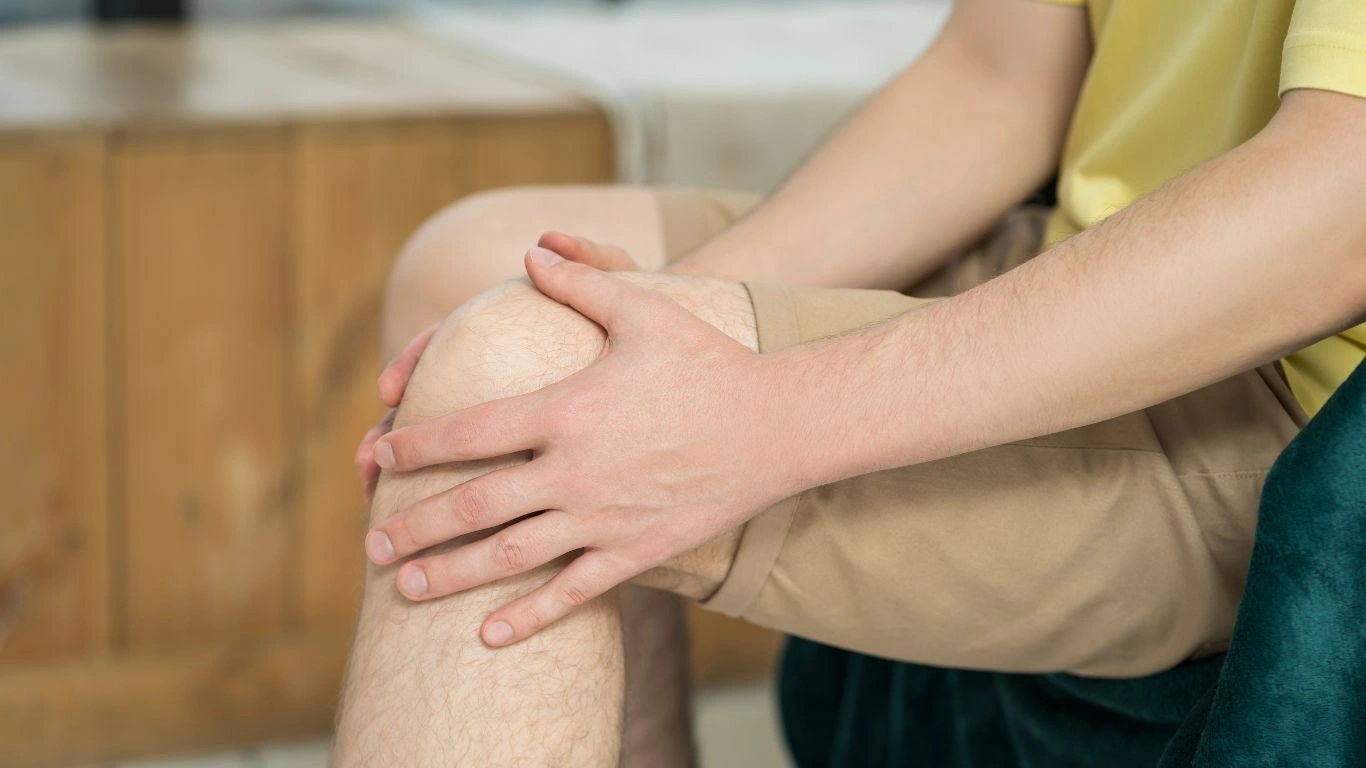Rheumatoid Arthritis Pain Relief That Actually Works
As a Rheumatology Nurse Practitioner, I’ve seen firsthand how debilitating rheumatoid arthritis (RA) can be for patients. One of the most challenging aspects of RA is the pain. Whether it’s constant aching, joint stiffness, or those sudden flares that can knock you off your feet, rheumatoid arthritis pain relief is something everyone living with the condition is constantly seeking. In this blog post, we’ll dive into the different ways you can find relief from RA pain, from traditional treatments to alternative therapies, and I’ll share some personal insights along the way.
Understanding Rheumatoid Arthritis Pain

Before we dive into the methods for finding relief, it’s important to understand what causes the pain in the first place. RA is an autoimmune disease, which means your body’s immune system mistakenly attacks healthy tissue, primarily in the joints. This leads to inflammation, swelling, and over time, damage to the joint tissues. The inflammation itself is often what causes the most pain and discomfort. When the immune system is in full attack mode, it can cause constant aching and tightness in the affected joints, making everyday tasks harder to perform.
The pain experienced with RA varies from person to person. Some may feel it as a dull ache, while others experience sharp, stabbing pain, especially during flare-ups. The pain is often accompanied by stiffness, which makes it even harder to move. RA commonly affects the smaller joints, like those in the hands, wrists, and feet, but it can also impact larger joints like the knees, hips, and shoulders. Understanding this pain is the first step toward finding the right relief strategies.
Common Treatments for Rheumatoid Arthritis Pain Relief

When it comes to managing RA pain, there are several routes that can be explored. The goal is to reduce inflammation, control symptoms, and improve quality of life. Let’s break down some of the most common treatments used for rheumatoid arthritis pain relief.
Medications: The First Line of Defense
Medications are often the go-to solution for pain relief in rheumatoid arthritis. The most common classes of drugs used to treat RA include:
- Nonsteroidal anti-inflammatory drugs (NSAIDs) – These are your typical over-the-counter pain relievers, like ibuprofen, that reduce inflammation and ease mild to moderate pain.
- Disease-modifying antirheumatic drugs (DMARDs) – DMARDs are designed to slow down the progression of the disease by targeting the underlying immune system issues. Methotrexate is the most commonly prescribed DMARD, and it’s effective for many patients in managing RA pain and preventing joint damage.
- Biologic agents – These are more advanced treatments for RA that target specific parts of the immune system. Biologics, such as TNF inhibitors (e.g., Humira), can be incredibly effective at reducing pain and inflammation.
- Steroids – Prednisone and other corticosteroids can provide quick relief by reducing inflammation. However, they are typically used for short-term flare-ups due to potential long-term side effects.
While medications can be highly effective at managing pain, they do come with potential side effects, especially with long-term use. This is where other therapies can complement your treatment plan.
Physical Therapy: Moving Toward Relief
When it comes to RA, movement is often the key to reducing stiffness and improving joint function. That’s where physical therapy comes in. A physical therapist can work with you to create a customized exercise program that strengthens the muscles around your joints, which helps alleviate the pressure on affected areas. Stretching and strengthening exercises can also improve flexibility and mobility, which is crucial for day-to-day activities.
In my experience, many patients are hesitant to engage in physical therapy for fear of making their pain worse, but it’s quite the opposite. Regular, gentle exercises help keep joints limber and reduce the intensity of RA pain over time. Swimming or water aerobics is often recommended because the buoyancy of water reduces the strain on your joints while providing a great full-body workout.
Alternative Therapies for RA Pain Relief

Alongside traditional treatments, many people with rheumatoid arthritis explore alternative therapies to help manage pain. While these treatments may not cure RA, they can certainly improve comfort and overall well-being. Here are a few options to consider:
Acupuncture: A Holistic Approach
Acupuncture is an ancient Chinese practice that involves inserting thin needles into specific points on the body. Many patients with RA report experiencing significant pain relief after acupuncture sessions. The theory behind acupuncture is that it helps balance the flow of energy (or “qi”) throughout the body and stimulates the release of endorphins, the body’s natural painkillers.
While scientific evidence on acupuncture for RA is mixed, some patients swear by it as a way to reduce pain and inflammation. If you’re open to alternative medicine, it could be worth giving it a try under the supervision of a qualified practitioner.
Massage Therapy: Relaxing Those Tense Muscles
Massage therapy can be an incredibly soothing treatment for RA pain relief. Gently massaging the affected joints and muscles can help relax the muscles around the joints, reducing tension and improving circulation. Some massage therapists even specialize in working with patients who have RA, using techniques that are gentle and tailored to the needs of those with joint inflammation.
One personal experience I’d like to share: I’ve had patients who reported a significant improvement in both pain relief and their overall sense of well-being after incorporating regular massage therapy into their routine. Of course, you’ll want to work with a therapist who understands RA and can adjust their approach to your specific needs.
Dietary Considerations: Fueling Your Body Right
What you eat can have a significant impact on inflammation and overall RA symptoms. Some foods are known to promote inflammation, while others can help reduce it. A diet rich in anti-inflammatory foods, such as omega-3 fatty acids found in fatty fish (like salmon), nuts, and seeds, may help keep your symptoms in check.
On the flip side, highly processed foods, sugars, and trans fats are known to increase inflammation in the body and can worsen RA symptoms. I always recommend working with a dietitian to develop a meal plan that’s tailored to your needs. The right diet can help you feel better and give your body the fuel it needs to fight inflammation.
Mind-Body Connection: Managing RA Pain with Mental Wellness

When we think about rheumatoid arthritis, we often focus on the physical pain—the inflammation, the stiffness, and the discomfort in the joints. But RA is more than just a physical disease; it also affects the mind and emotions. If you’ve ever found yourself feeling stressed, anxious, or even depressed due to the limitations of RA, you’re not alone. The good news is that managing your mental and emotional health can play a significant role in reducing your physical pain.
In my years as a Rheumatology Nurse Practitioner, I’ve seen how powerful the mind-body connection can be. Research consistently shows that stress and anxiety can exacerbate RA symptoms, making the pain feel even more intense. On the flip side, techniques that promote relaxation and mental wellness can actually help reduce inflammation and improve overall pain management. Let’s look at some strategies that can benefit your mental health and, in turn, help alleviate your RA pain.
Mindfulness Meditation: A Tool for Stress Reduction
Mindfulness meditation is one of those practices that seems simple but can have profound effects on pain management. By focusing on the present moment without judgment, you allow yourself to step away from the constant cycle of pain and frustration. I’ve seen patients who have integrated mindfulness techniques into their daily routine report a decrease in both pain and stress levels.
The beauty of mindfulness is that it’s accessible. You don’t need special equipment, and it can be done anywhere. Whether you’re sitting in a quiet room or lying in bed, simply closing your eyes and focusing on your breath can be incredibly grounding. Over time, regular practice can help train your mind to react less negatively to pain, which can reduce the intensity of the discomfort you feel.
If you’re new to mindfulness, there are plenty of apps like Headspace or Calm that can guide you through short, beginner-friendly sessions. Even just five minutes a day can make a difference.
Yoga: Gentle Movement for Pain Relief
Yoga is another fantastic way to reduce both the mental and physical burden of RA. Many patients are hesitant to try yoga, thinking it requires a high level of flexibility or strength, but in reality, yoga for rheumatoid arthritis is all about gentle movements that promote relaxation, flexibility, and strength without putting too much strain on the joints.
One of the most valuable aspects of yoga is that it emphasizes slow, controlled movements. This helps maintain joint function and reduces stiffness. I’ve had patients who started with chair yoga or basic stretching poses and saw a noticeable improvement in their pain levels over time. The deep breathing incorporated in yoga also helps reduce stress and improve overall well-being, which can reduce the impact of inflammation.
If you’re interested in starting yoga, I recommend finding a class or instructor experienced with RA, as they can offer modifications to ensure you’re doing the poses safely. There are also online resources and videos that cater specifically to RA patients.
Incorporating Heat and Cold Therapy for Immediate Pain Relief

Sometimes, managing rheumatoid arthritis pain comes down to simple, immediate techniques like heat and cold therapy. These therapies may not necessarily cure RA, but they’re great for providing temporary relief and can be easily incorporated into your daily routine. I’ve found that many of my patients swear by these techniques for managing flare-ups, especially when they need to get through their day without exacerbating their pain.
Heat Therapy: Soothing and Relaxing
Heat therapy can be incredibly soothing for RA patients, especially when your joints are stiff and tense. Applying heat increases blood flow to the affected area, which can help reduce stiffness and improve range of motion. For those with RA, heat can be especially effective for joints in the hands, shoulders, and neck.
There are a few ways to apply heat, including:
- Using a warm compress or heating pad on affected areas.
- Taking a warm bath to relax your entire body, which can relieve stiffness in multiple joints.
- Applying heat pads or gel packs specifically designed for joint pain.
As a general rule, I advise patients to avoid using heat if they have active swelling or flare-ups, as it can sometimes worsen inflammation. Heat is best used during the “calmer” periods when you’re experiencing muscle tightness or stiffness rather than intense inflammation.
Cold Therapy: Reducing Swelling and Inflammation
Cold therapy is the go-to treatment for reducing inflammation, especially during a flare-up. By constricting blood vessels and slowing down blood flow, cold therapy can help reduce swelling and provide numbing relief to sore joints. It’s particularly effective when RA causes sudden, sharp pain or when you’ve overexerted a joint during daily activities.
You can use cold therapy in several ways, such as:
- Applying ice packs wrapped in a towel to swollen or painful joints.
- Taking a cold compress and placing it on your wrist or knees for 15-20 minutes.
- Using frozen gel packs or commercially available cold therapy wraps designed for joints.
One thing I always remind patients is to never apply ice directly to the skin. Always use a cloth or towel to avoid frostbite. You want to ensure a comfortable, gentle level of cold exposure that doesn’t cause discomfort.
Getting Support: Building a Rheumatoid Arthritis Pain Relief Team

Living with rheumatoid arthritis can be incredibly isolating at times, but one of the most important factors in managing pain is building a support system. Whether it’s family, friends, or healthcare providers, having a network of people who understand and support you can make all the difference.
Rheumatology Specialist: Your Guide to Effective Treatment
If you’re living with RA, you’re likely already working with a rheumatology specialist. Rheumatologists are experts in diagnosing and treating autoimmune diseases, and they can help you develop a personalized treatment plan for managing your RA pain. In my experience, a good rheumatologist is someone who listens to your concerns, adjusts your treatments as needed, and helps you navigate the ups and downs of the disease.
Regular follow-ups with your rheumatologist are essential for making sure your treatment plan remains effective. If you’re not feeling relief from your current medications or treatments, don’t hesitate to ask for alternatives. Your treatment journey is a partnership between you and your healthcare team, and your doctor is there to help you find the right balance.
Support Groups and Community
Sometimes the best support comes from people who are walking in your shoes. RA support groups, whether in person or online, can provide a sense of community and understanding. Sharing experiences, tips for pain relief, or just having a place to vent can be incredibly therapeutic. Knowing that you’re not alone in this journey can help reduce feelings of isolation and improve your emotional well-being.
Whether you find a local support group or join an online community, make sure it’s a safe, welcoming space where you feel comfortable sharing and learning from others.
Exploring the Role of Surgery in Rheumatoid Arthritis Pain Relief

While we’ve covered a lot of the non-invasive methods for managing rheumatoid arthritis (RA) pain, sometimes the severity of RA requires more advanced options. For some individuals, when medications, physical therapy, and lifestyle changes aren’t enough, surgery may be considered to improve function and reduce pain. As a nurse practitioner, I’ve seen firsthand how surgery can transform a patient’s life, but it’s important to approach this option with careful consideration.
Joint Replacement Surgery: A Lifesaver for Some
One of the most common surgeries for individuals with severe RA is joint replacement. As the disease progresses, it can cause irreparable damage to the joints. When pain becomes unmanageable, and movement is significantly restricted, joint replacement surgery can offer a way to restore mobility and reduce pain. The most commonly replaced joints are the hips, knees, and shoulders. However, in some cases, joints in the hands or feet may also be replaced.
From my experience, joint replacement surgery isn’t always an immediate decision. For many patients, it’s a last resort after other treatments have failed. However, it’s worth noting that this procedure has a high success rate, and many patients experience life-changing improvements after recovery. The goal is not just to relieve pain but also to improve joint function, so patients can regain a better quality of life and get back to activities they’ve had to give up due to pain.
If joint replacement surgery is something you and your doctor are considering, it’s crucial to fully understand the recovery process, which can take several months. Physical therapy and rehabilitation play a significant role in helping you get back on your feet, so be prepared for some effort post-surgery.
Synovectomy: Removing Infected Tissue for Pain Relief
Another surgical option for RA pain relief is synovectomy, which involves the removal of the inflamed synovial tissue lining the joint. This tissue is often responsible for causing pain and swelling in RA patients, so removing it can reduce inflammation and improve joint function. The procedure may be performed arthroscopically, meaning through small incisions, which leads to a quicker recovery time than traditional open surgery.
Synovectomy is generally considered when RA is still active in a joint, but damage has not yet been extensive. It’s a less common surgery than joint replacement, but it can provide significant relief for certain patients. In my experience, synovectomy can be an effective alternative for patients who are looking to avoid the more extensive recovery process associated with joint replacement surgery.
Innovative Pain Relief Methods for Rheumatoid Arthritis

As we look to the future, there are constantly new and innovative treatments being developed for RA pain relief. In recent years, advancements in medical technology and research have brought exciting new therapies to the forefront. As someone deeply involved in the rheumatology field, I’m always keeping an eye out for these emerging treatments. While many of these methods are still in the early stages, there is hope that they will continue to evolve and provide even more options for people living with RA.
Stem Cell Therapy: A Cutting-Edge Treatment
Stem cell therapy has shown promise in treating autoimmune diseases like rheumatoid arthritis. The idea behind stem cell therapy is to use cells that have the potential to develop into different types of tissue to repair damaged joints and promote healing. The thought is that stem cells could regenerate damaged tissues in the joints, helping to reduce inflammation and slow disease progression.
While stem cell therapy is still being researched, some early studies have shown positive results. Patients who have undergone stem cell injections into their joints have reported reduced pain and better joint mobility. However, this treatment is still considered experimental, and it’s important to consult with your doctor before exploring this option. In my experience, many patients are intrigued by the potential of stem cells but are also cautious due to the lack of long-term data.
Regenerative Medicine: PRP Injections
Platelet-rich plasma (PRP) therapy is another exciting development in the world of RA treatment. PRP involves taking a sample of your blood, processing it to concentrate the platelets (which contain growth factors), and then injecting it back into the affected joints. The theory is that these platelets help promote healing, reduce inflammation, and improve joint function.
Some studies suggest that PRP therapy may be beneficial for patients with moderate to severe RA who have not found relief through other treatments. It’s not a cure for RA, but it can help manage symptoms and may allow patients to reduce their reliance on medications or surgeries. PRP is still considered an alternative therapy, and more research is needed to understand its long-term effectiveness. However, many RA patients I’ve worked with have reported positive results after undergoing PRP injections.
Building a Holistic RA Pain Relief Plan
One of the most important lessons I’ve learned throughout my career is that there’s no one-size-fits-all solution for rheumatoid arthritis. RA is a complex disease, and pain relief is a deeply personal journey that involves a combination of treatments tailored to your specific needs. Building a holistic approach means considering not only medications but also lifestyle changes, mental health, physical therapies, and even exploring cutting-edge treatments.
For some, it’s about taking the right medications to control inflammation. For others, it might mean a focus on physical therapy, mindfulness practices, or dietary changes. And for some, it could be a combination of everything. The key is to work with your healthcare team to find what works best for you and to stay informed about new developments in the field. As your partner in this journey, your rheumatologist and nurse practitioner will be there to guide you through the ups and downs and help you make informed decisions about your care.
References
- Research on rheumatoid arthritis treatment options
- Clinical trials for stem cell therapy in RA
- Rheumatoid Arthritis support groups and community resources
Disclaimer
The information provided in this article is intended for general informational purposes only and should not be used as a substitute for professional medical advice, diagnosis, or treatment. Always seek the advice of your physician or another qualified healthcare provider with any questions you may have regarding a medical condition. Never disregard professional medical advice or delay in seeking it because of something you have read in this article.

Tarra Nugroho is a dedicated Nurse Practitioner with a strong foundation in family and preventive care. She brings both compassion and clinical expertise to her practice, focusing on patient-centered care and health education. As a contributor to Healthusias.com, Tarra translates medical knowledge into clear, empowering articles on topics like women’s health, chronic disease management, and lifestyle medicine. Her mission is simple: help people feel seen, heard, and informed—both in the clinic and through the content she creates. When she’s not caring for patients, Tarra enjoys weekend hikes, plant-based cooking, and curling up with a good health podcast.





